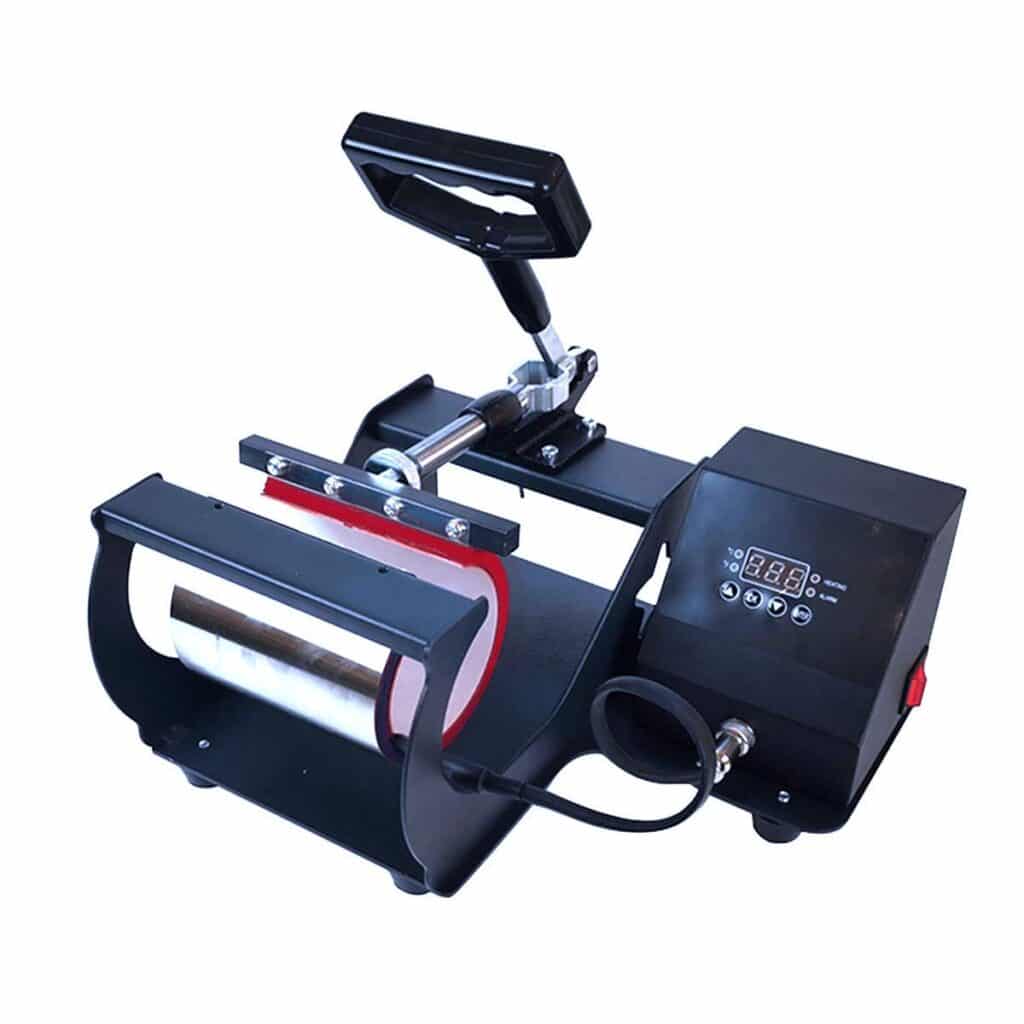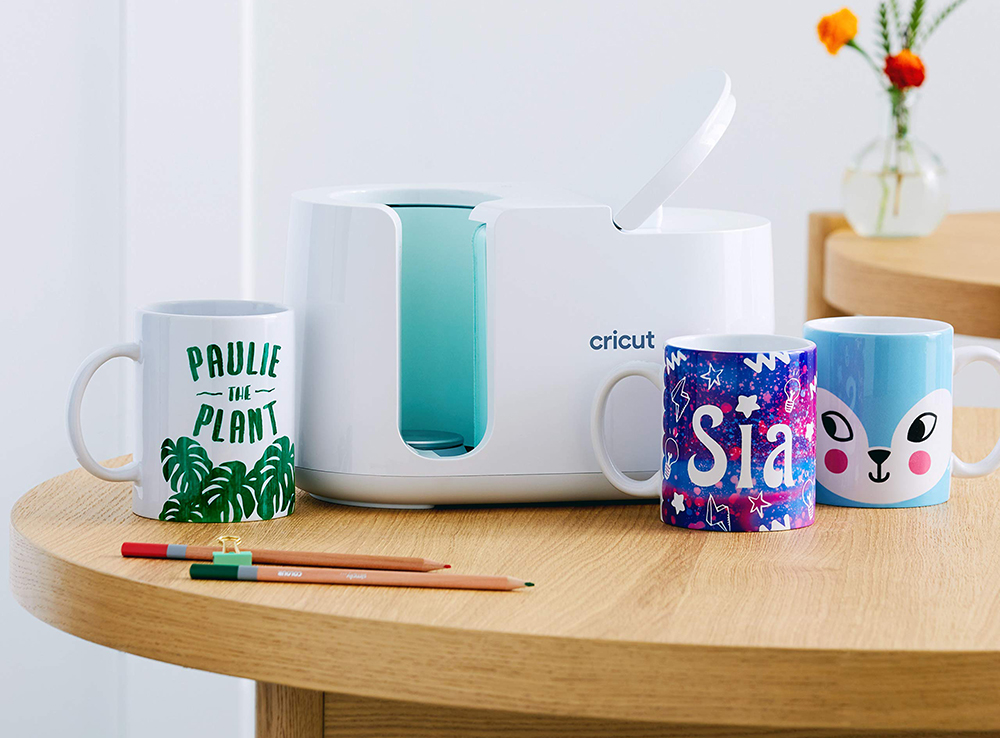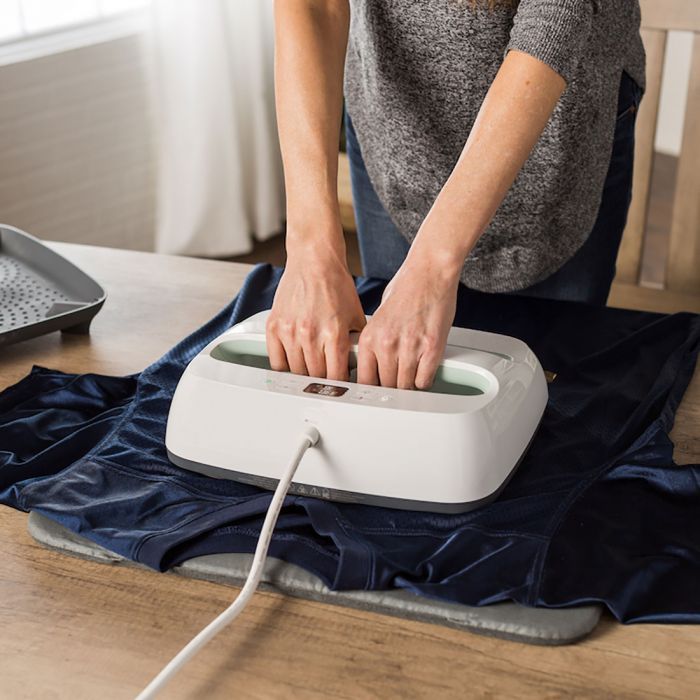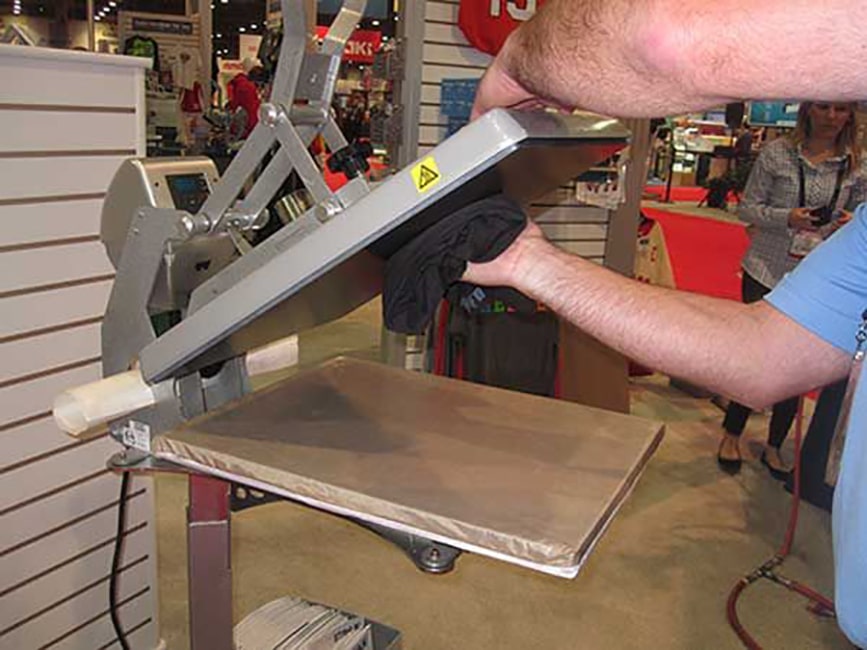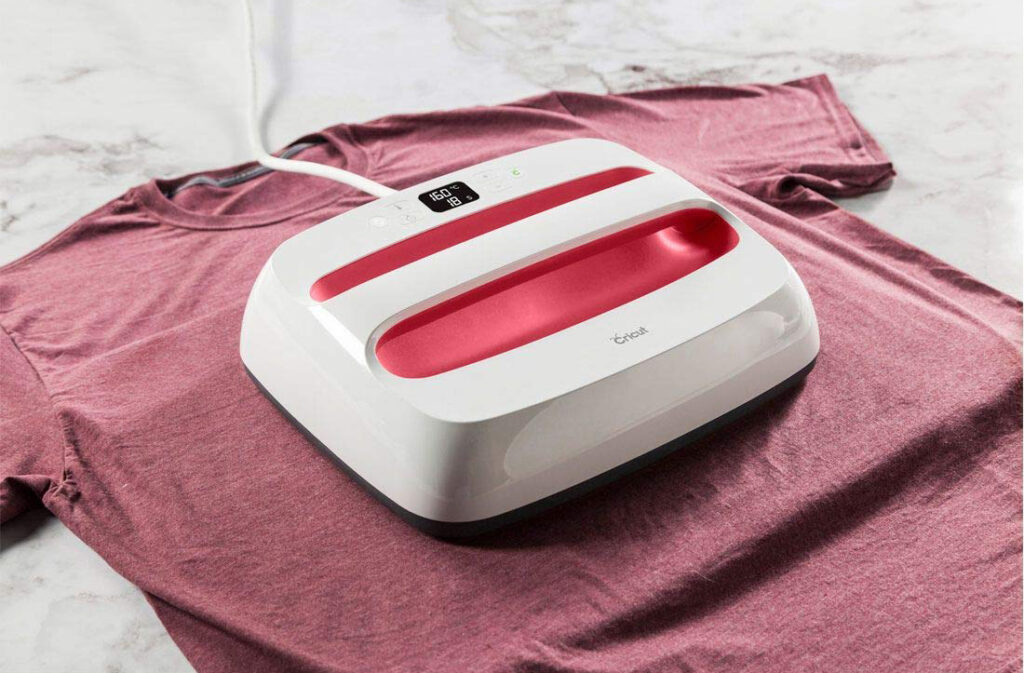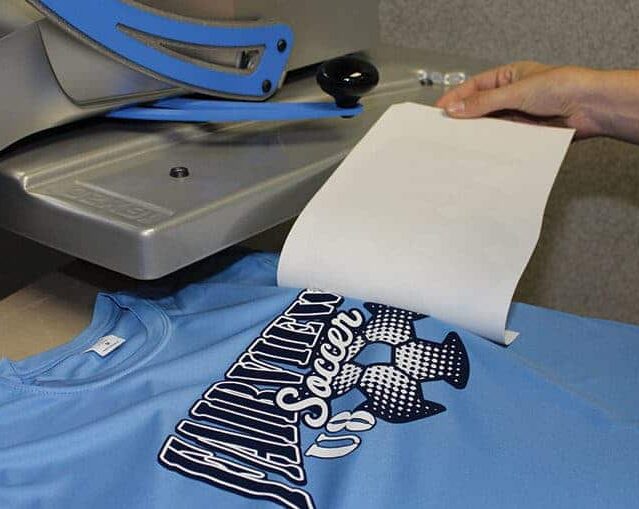

To say that a lot of people looking to buy the best screen printing machine are likely to fail would be an understatement. Most of you don’t seem to notice the pitfalls of the current marketplace. The result is that you tend to buy products you know nothing about and end up disappointed with the purchase.
We are making it a point not only to suggest some great options but also to highlight the features you should look out for in a high-quality machine. On the list below, you’ll see that we have highlighted the number of colors and stations provided by each machine. This means you’ll be able to tell how many prints you can do at the same time. Next up, the printing area dictates the size of the clothes and fabrics you can work with. Also, looking into dimensions and weight is a wise move for buyers. You get data that helps with planning and installation. Finally, a guarantee by the manufacturer is always welcome. After reviewing 37 different options, we came up with a list of top 11 picks, and the EEZGLOBAL 006431 Screen Printing Machine deserved our Editor’s Choice.
Other features: 1.2″ thick screen frames, all-metal construction, advanced electrostatic spraying and electroplating
A prime example of getting good value for money is the EEZGLOBAL 006431 Screen Printing Machine. If you are not new to screen printing, you will know that each screen can only be used for one color at a time. Since the machine can hold about four screens, it translates into four colors.
Noteworthy is the number of fabrics you can print on at the same time is limited to two. This is because the machine comes with the two printing stations imaged above. Each of these printing stations comes with an 18” x 22” platen where you can place your t-shirts, hoodies, and other fabrics that you want to print on.
If you haven’t already deduced this from the image above, this is a tabletop tool. As such, it works even in a limited space scenario. You can even put it on a kitchen countertop without any fuss. The weight is also optimal for this kind of setup.
As a result of the above choices made by the manufacturer, it shouldn’t be a problem to find adequate storage space. Also, just because this printing machine is relatively lightweight does not mean that it comes with flimsy construction. The all-metal build is capable of lasting a long time, even with everyday use.
The manufacturer does not stop there in their bid to protect the tool from damage. This is where the electroplating and the electrostatic spraying come in to prevent product deterioration due to rust. Additionally, you can attach up to 1.2″ thick screen frames that are more than capable of handling a massive workload without breaking under pressure.
Also, the tool lacks a bracket in the shipping package. However, there are four screws available for each platen. Their job is to help you fasten the platen to the pallet base.
Other features: a function of micro-adjust/registration, all-metal construction, advanced electrostatic spraying and electroplating, table type and combinatorial design
For a more professional piece of equipment that can handle tons of work, there is the TECHTONGDA 6 Color 6 Station Screen Printing Machine. As you can probably tell from the image, most people would probably rate this product higher than its predecessor. However, the editor’s choice would still be picked over this model due to affordability.
Also, most people wouldn’t be able to bring out the device’s full potential since they don’t have big markets to serve. However, you will likely need to expand at some point. When you do, this is one of the screen printing machines for a clothing line that you should be looking at.
Usually, the tool can handle up to six colors on different screens at the same time. However, when you do encounter dark or black t-shirts, you need to account for a white under-base. This will leave you with five colors. However, five colors is still a high number for a screen printing machine and the highest number you’ll get on this list.
Except for the platens, the rest of the TECHTONGDA 6 Color 6 Station Screen Printing Machine is all metal. Not surprisingly, this tool shares that feature with the EEZGLOBAL 006431 Screen Printing Machine. It also features similar levels of rust-proofing.
Most people will need to install this on their floors due to the weight. This shouldn’t be a problem unless you intend to move it. Nonetheless, it is expected of such a device to be heavy.
The screen layer of the machine, as well as the pallet layer, are not restricted in how they rotate. Also, even as these rotations are happening, the device has a base that keeps it stable and well balanced.
Other features: 11.8″ x 9.4″ max. frame size, 1.2” max. frame thickness, equipped with 2 locking rings
The TECHTONGDA Cylinder Screen Printing Machine is one of two of its kind on our list. Some of its benefits can also be seen in the VEVOR TX-X1 Cylinder Screen Printing Machine.
Users will find it a piece of cake to switch out or replace the screen frame on this tool whenever they feel the need to. The same is the case for the ink-recover scraper and the squeegee blade. However, the fact that it comes with two screen frames, to begin with, is quite thoughtful of the manufacturer.
Worth noting is that the printing platform is adjustable to cater for most cylindrical surfaces less than 3.15” in diameter. Also, to prevent problems, make sure that spring tension on both sides of the machine is the same. This way, the screen frame remains straight, and the printing project goes well.
Finally, most of the assembly of the machine has also been done for you. You just need to do some final touches before you start printing.
Other features: 3/4″ thick frame, pallet moves within 3.14/15″
You also need to remember that to have a screen-printing business, you need lots of materials. The screen printing machine is just the beginning. You still need squeegees, screens, frames, pigments, and more.
Some people may find it hard to keep track of all these materials, and as such, some things may be forgotten. This worry is eliminated if you choose the TECHTONGDA Starter Screen Printing Kit as your purchase since all starting elements are included in the purchase. This even includes two random color t-shirts for testing and training purposes.
If you’re just starting in the business, you may as well need to purchase a few extra t-shirts just for practice purposes. After all, you should want to provide your customers with top-quality prints, and getting enough practice is one of the ways to do it.
Also, this tool deserves a rating close to that of the editor’s choice due to the similarities in design. This is despite the two screen printing machines for t-shirts being from competing manufacturers.
Seeing as though this is a four-color machine, it does fit in nicely in a small or medium-sized printing shop. As you may have already deduced, this product comes with two platens. Both of these can be moved a distance of 10cm from front to back.
Additionally, the manufacturer knows that you will be using substrates of different thicknesses. The clamp is adjustable to cater for this eventuality. Users can also adjust screen tension. This caters to the different screen frame weights that the machine is likely to encounter.
Worth remembering is that the part of the machine that holds the screens can be rotated a full 360 degrees.
Other features: micro-adjust function, screen clamp suitable for screen frame within 3/4″
The design of this screen printing machine is almost identical to that of the TECHTONGDA Starter Screen Printing Kit. It would, however, do you some good to remember that this purchase doesn’t come with as many accessories.
Nevertheless, what you get is a machine capable of handling all of a small printing shop’s needs. Also, you can purchase this for home use, although it may prove surplus to requirements.
There also needs to be an emphasis on perfection if you are to grow your brand into something most people would pay big money for. It would thus be counterproductive to have colors mismatched in some of your prints. To avoid this, you can use the red knobs to move the screen frame to its optimal position. This may require a bit of movement either to the right or to the left.
The above are not the only adjustments you can make with regard to getting the position of the print right. You can as well move the pallet both backward and forwards. The leeway you have for these adjustments is 10cm. Stability is as well guaranteed and plays a significant role in ensuring clean outcomes.
Other people who’ve had their devices break down on them are also keen on construction. Luckily there is no cause for alarm with the ARTDID 006523 Screen Printing Machine. It is strong enough to resist breaking and is protected from deterioration by rust.
Lastly, people may love this purchase for the fact that it comes with installation videos. There is thus no need to struggle with unclear instructions.
Other features: micro-adjust/registration, table type, and combinatorial design, 1.6″ thick frame
If you’d rather have a one station device that comes with a stand, then the TECHTONGDA 4 Color 1 Station Screen Printing Machine is available. While this stand is stable, you can also choose to mount it on a tabletop of choice. You do have to be careful in selecting a sturdy tabletop that can handle the weight of this tool.
If you feel like the screen is not aligned as well as you would like it, there is a recourse for that. The small red handles can be used to move the screen slightly to the left or slightly to the right. This feature is known as micro-adjust and is highly beneficial. As such, you will be able to nail the color matching each time you set out to print.
Also, this machine incorporates zinc, nickel, and aluminum plating on the metal parts. It is no wonder this investment is impervious to rust. Also, given how almost all components are seemingly made of metal, you don’t expect the tool to fall apart after a few episodes of intense use.
Additionally, if you have screen frames that are less than 4cm in thickness, you are in luck. You won’t have to purchase any additional frames to work with the device. However, you do need to consider a 4cm thickness your new limit if you are buying new screen frames.
Other features: 1.8″ max. screen frame thickness, 6 aluminum silk screens with 110 count mesh
A possible screen printing machine for beginners who still want the option of multiple colors is the VEVOR Screen Printing 4 Color 1 Station Screen Printing Machine. It can also work as a backup to a device with more stations for a printing shop. With its current design, you can only print one t-shirt at a time.
Seeing as though the product has fewer parts than the VEVOR Screen Printing Machine 4 Color 4 Station Printing Machine, it might be less complicated to put together. This is not to mean it is easy. You may still have to struggle a bit. Nevertheless, the assembled product does make fulfilling your flat printing needs easier.
Also, multiple springs are lining the construction of this tool. These help adjust the screens up and down when you get to the business of printing. They can also be adjusted to cater to the size and weight of the screen in use. You are, however, limited in the thickness of the screen frames you can choose. The maximum thickness is 1.8”.
A lot of value is as well added to the purchase by the manufacturer with the inclusion of the six aluminum silk screens. These accessories also include Teflon and nylon in their construction. What results is a durable screen that you can use and reuse as many times as you need to. However, this is contingent on you rinsing them after each use with running water.
Stability is also something that you are guaranteed. The machine can thus not be blamed for the print going wrong at the last moment.
Other features: steel plate, electrostatic spraying, pallet can adjust 12cm from front to back
Another compact product that is worth consideration by the home user is the Calca 1 Color 1 Station Screen Printing Machine. With a single station as well as a single color orientation, this will be a walk in the park to use. This is regardless of whether you are new to the screen printing trade or you have some experience.
The maker is also committed to making sure you get the best out of your prints. That is why for alignment purposes, you have the liberty to adjust the pallet either 12cm to the front or the back.
Also, the manufacturer realizes that you might have to deal with different weights in your screen frames. To cater to that, a turnbuckle is included, which you may have to adjust when you encounter new frames.
Installation is as well a walk in the park. However, you may need to screw the device onto your countertop for added stability. When you need to put it away, you as well won’t have any problems due to its small weight and size.
Also, even though buyers will not be using it daily, it is still built strong enough to last a while. This also includes rust-proofing.
Other features: 0.78” screen frame clamp, 30-45 degree angle
Those looking to have a screen printing machine for home use can also opt to have this as their primary tool. The device can easily fit in a garage or shed and come out when you need to print clothes for a small occasion. The image of the screen printing machine shows that you only get one station to work with.
Additionally, you get one color option. Consequently, this purchase is best used for more straightforward printing needs. As such, the machine is smaller and lighter than the editor’s choice and most of the higher-end machine’s listed.
Some common substrates you are likely to find being printed on with this device include non-woven bags, pillowcases and the most common is of course t-shirts. You as well get a relatively wide printing area to work with. Also, beginners should have a field day using this screen printing machine since it is so easy to work with.
Nonetheless, this tool would be out of place in a printing shop of whatever capacity.
Other features: 2” thick frame, full metal structure
Another device that is relatively easy to notice on the market is the VEVOR Screen Printing Machine 4 Color 4 Station Printing Machine. Even the name tells you a lot about what you need to know about this product. It offers four colors, which will be reduced to three if you need to include a white under-base.
Additionally, four stations mean you can add four t-shirts to the platens on your device and start printing. Of course, this tool is not just for use with t-shirts as it can be used on several substrates. These include metal, woven fabrics, paper, plastic, ceramic, wood, and more.
Again, due to the number of colors and the number of stations, this can be considered to be a professional device. Not many people who print their t-shirts from home will have use for a four-station device while they can work with one. However, if the goal is to print a few hundred substrates a day, the more the stations, the better.
In line with this kind of workload, durability is paramount as a selling point of the device. This is why a coat of electrostatic spray covers the metal components of the machine. You will likely never see a user of this device complain of breakages or rust.
Also, the tool is capable of clamping down on screen frames that are even 2” in thickness. The movable head and rotating platen layer mean you can change the colors on different t-shirts at a moment’s notice. Lastly, this tool will not take up a lot of space in your workshop or garage due to its tabletop design.
Other features: adjustable lift and base, non-slip handle design, 80 mm max. printing diameter
Printing as well does not always involve a flat surface. Sometimes you need to get the job done on a bottle, glass cup, or some other cylindrical surface. In such a scenario, you will need a specialized tool for the same. This is where the VEVOR TX-X1 Cylinder Screen Printing Machine comes in.
Most of these cylinder machines only come with one station. The tool offers a maximum printing diameter of 200mm. You would do well to stay below this printing limit in your selection of substrates; otherwise, you risk a less than favorable result.
Also, you have two tools at your disposal to ensure that you get the best positioning for your cylindrical substrate. The base is ideal for positioning the product where it needs to be. On the other hand, the lift can be tweaked by the user to ensure it has sufficient clearance from the thermal flask, mug, or whichever substrate you are working on.
Another highlight is the non-slip handle. Remember, a small mistake in the middle of the project would result in a ruined product, and the non-slip grip can help prevent that.
Additionally, this tool has just as reliable a body as most of the other screen printing machines on the list.
The best screen printing machine for anyone is dictated by their use needs. A prime example of this is that no one looking to print bottles would go for the TECHTONGDA 6 Color 6 Station Screen Printing Machine. Nevertheless, people drop the ball with their selections all the time. If you want to avoid being part of that statistic, you will benefit from this buying guide.
Screen printing machines are responsible for some of the cool print designs you see on clothes, cups, bottles, and even wood. You will see variations of manual, semi-automatic, and automatic screen printing machines. They are actually simple in how they work.
You get negative designs are placed on the screens while the rest of it is lined by impermeable ink known as emulsion paint. The designs left on the screens allow printing ink to pass through to the substrate underneath. For a manual device, the user will use a squeegee to run whatever color ink they want over the screen. Consequently, the image of the design will be left on the substrate.
Automatic screen printing machines work almost the same way. They, however, use automatic squeegees rather than the user’s arms to squeeze the print ink through the screens.
The best way to look into the benefits of screen printing machines is to look at them in comparison to their digital counterparts. This way, you will know what sets them apart from the competition. They include the fact that screen printing machines produce the highest quality outputs, especially in comparison to the digital print machines.
Also, if you are looking for a machine that will work with lots of different substrates, the screen printing option is the way to go. Some examples include wood, textiles, glass, and even electronics.
A third benefit is that you get to dictate all details on the positioning of the print on the substrate. The last benefit you are likely to come across if you choose such a purchase is that your prints will generally last a long time.
You might forget to consider one aspect of your screen printing machine and ruin the entire purchase. As such, a checklist of all the essential considerations should do you good. You can create a simplified one from the list below. Also, if you take your time and read this section, you should also have in-depth information on all potential features and types of machines you are likely to encounter.
As you may already know, different screen printing machines are made to work on various substrates. Most people will initially buy theirs for printing on textiles such as pillows, hoodies, and more. In such cases, products like the VEVOR Screen Printing 4 Color 4 Station Printing Machine work just fine.
You may also want to print on cylindrical surfaces. In that case, a machine with a platen printing surface just won’t work. However, tools like the VEVOR TX-X1 Cylinder Screen Printing Machine are specially made for such purposes. As such, you should know the products that you are most likely to work with beforehand. Otherwise, you will likely make a mess of the purchase.
A prime example of a manual screen printing machine is the INTBUYING 1 Color Screen Printing Machine. The user is tasked with creating the negative design, imprinting it on the screen, mixing the ink, and lastly, using the squeegee to leave a print on the substrate. All the machine does is press down the screen on the substrate to get a favorable result.
For a semi-automatic screen printing machine, your work becomes easier. However, you still need to do some things that include creating the design on the screen and attaching it to the machine. Connecting the squeegee and positioning the substrates is also your job.
The last step is to push a button. The machine will push the squeegee over the screen as many times as you need it to. All you’ll have to do is keep changing substrates until you are done.
This makes it ideal where you need to print the same thing over and over again, such as with posters. Remember, you have to take out the screen and squeegee after use and clean them. Fully automatic screen printing machines are the last category you may encounter.
They have a lot of the same requirements for them to work. For instance, they need you to create the design on the screen and line the rest of it with the emulsion paint. The next step is to attach the screen and a clean squeegee to the machine.
You may also want to load the substrates into the machine’s feeding tray before you add the ink and press the on button. Once you do, the device will automatically feed the substrates for printing. You can leave it working for a while and come back to find readymade posters and more. Later you collect the posters and clean the materials used.
Often the number of color options refers to the number of screens that can be attached at the same time. This is because one screen can only hold one color at a time. For more complicated designs that involve the inclusion of multiple colors, a higher number of screens is ideal. That way, you can print, rotate the device to change screens, and print over the substrate again.
For a device that holds a single screen, you would need to print, remove the screen, and switch it up for a different one before continuing with the process. If you are a home user, you probably won’t mind this way of doing things. However, in a print shop, this is inefficient and time-consuming. This results in a decline in productivity, which you do not want. A higher number of color options is, therefore, in your best interests.
Also, dark substrates play by a different set of rules. This is because they often need a white under-base if you are to get the type of quality you need in your print. As such, adding that under-base reduces the number of color options you have by one.
The number of stations also dictates how many substrates you can have on your machine at the same time. If a device has two stations like the EEZGLOBAL 006431 Screen Printing Machine, you can only print two substrates at the same time. This is despite the tool having four colors.
If the aim is to print as many substrates as possible in a short amount of time, you are better off going for a tool with more platens.
Additionally, you also need to know the limits to your print size. This is where the printing area comes in. However, it all depends on what you intend to do with the machine. If, for example, you are printing baby clothes, you don’t need extra-wide platens.
Planning for installation space is also something you need to do, especially if you are working from home. You need to make do with available space, and as such compact tools like the Calca 1 Color 1 Station Screen Printing Machine work best. Also, such devices are likely to take up less storage space in your garage or shed when you are not using them.
For those looking to get a workshop for their print work, they are more likely to have a bigger space to work with. As such, a tool like the TECHTONGDA 6 Color 6 Station Screen Printing Machine will fit right in.
Some of you may have to move the screen printing machine in and out of storage occasionally. A device that weighs 334 lbs like the TECHTONGDA 6 Color 6 Station Screen Printing Machine would make that quite tricky. As such, if you are purchasing this tool, you should plan on installing the product in a place where it won’t be moved.
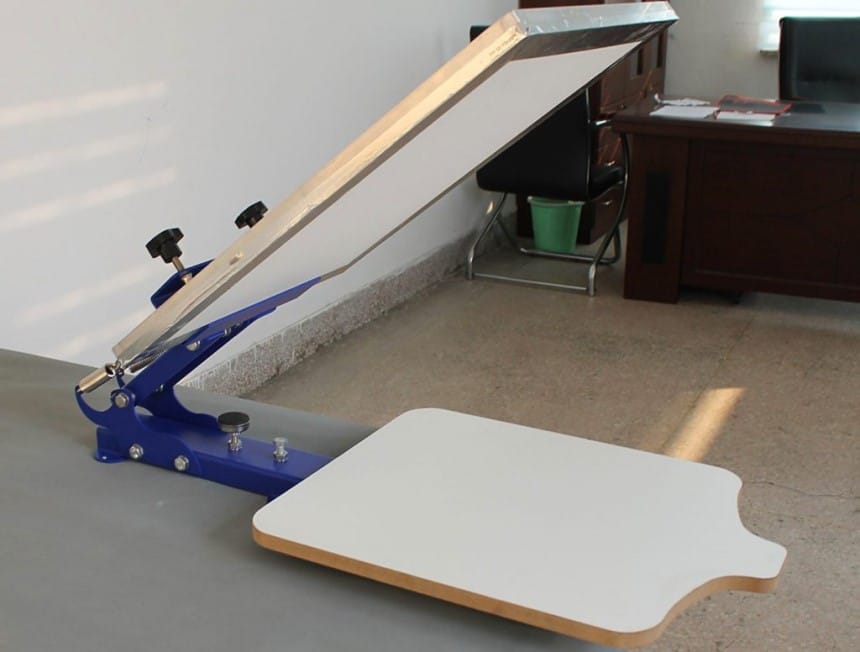
If you look at the Calca 1 Color 1 Station Screen Printing Machine, you will note that the attached screen can only be moved up and down. When it comes to the platen, it can be moved back and forth for better positioning.
If you compare that with the TECHTONGDA 6 Color 6 Station Screen Printing Machine, you will see a difference in flexibility. Each screen can move up/down and be rotated to cover all six platens. Remember, once the t-shirt is optimally placed, it shouldn’t be moved until the printing is done. As such, the flexibility of the tool will allow different color screens to be rotated to the best position to allow for the printing.
If you are only just getting into screen printing, you do not want a product that is difficult to use. This is because it may result in less than optimal screen printing results. Those who have experience might have an easier time figuring out how to use sophisticated devices. Nevertheless, it would be less strenuous overall to choose an easy-to-use machine.
Installation and assembly also need to be among the top considerations for your purchase. Products like the TECHTONGDA 6 Color 6 Station Screen Printing Machine will need a lot of your time to put together. Even then, you might not get the process right. Some buyers have given up mid-assembly and returned products that gave them too much of a headache during the installation process. You do not want this to be you since it is a waste of resources.
The TECHTONGDA Starter Screen Printing Kit comes with all the accessories that allow you to hit the ground running. These include squeegees, screens, ink, and even a couple of test t-shirts. This is more than what any other device has to offer. However, this does seem to raise the price of the tool significantly.
Remember, if you do not buy a tool with such accessories, you are going to have to buy them separately. This, of course, needs you to budget for the extra cash required. Also, there is no rule against waiting a little while before purchasing the rest of the necessary gear. You can stagger the purchase times, so you don’t hurt your pockets in the process.
If a screen printing machine has extra features that automatically raises its standing in comparison to other devices of its class. Users can even expect some additional functionality with the purchase. Worth noting is that an extra feature here and there will sometimes result in extra cost in your device. If you still find it in your affordable range, you can still get such a device.
So you finally got that new screen printing machine into your workshop. You also have a bunch of t-shirts that you want to print, but you don’t know the first thing about it. This is no reason for you to worry. Below is a step by step breakdown of all the processes you need to go through to have custom prints on your t-shirt that you make yourself.
However, you need to have some materials nearby before you can start. These include the screens, latex gloves, a squeegee, photo emulsion paint, fabric ink, a computer, a printer, a dark room, a 250-watt bulb and lamp, a coater, and lastly, an iron/dryer.
Often people start with choosing a design that works for them. Beginners should start with simple one-color designs then level up the difficulty gradually. You can download the designs or make them in Photoshop. Of course, once you have the design selected, you need to print it on vellum paper. Some people may opt to use transparencies, but most experts advise against it. However, you can still use transparencies if you band two of them together for a cleaner image effect on the screen.
Once you are done printing, you can go ahead and prepare the screen for the image. This requires you to coat the clean screen with a fresh coat of emulsion paint. You may want to purchase a pre-mixed variation of the emulsion since it means less work for you.
Additionally, you should be in a dark room while you do this. This is because any sort of light will affect the emulsion negatively. You use the coater and apply a thin coat of emulsion on both surfaces of the screen. Right after that, you put it in a dark space and wait patiently for it to dry. If you aren’t that patient, you can speed up the process by adding a fan to the dark space.
Once dry, you place the vellum paper with the printed design on the inkwell side of the screen. This is the side of the screen that will not be in contact with the t-shirt during printing. The other side is known as the substrate side. Ensure you have a piece of pitch-black material under the screen when you are doing this. You may also need to attach the vellum paper with a few pieces of tape to ensure it doesn’t move.
Next up, you place the bulb and lamp above the screen and turn it on. A distance of about 1-2 feet is ideal. The whole process should take about 15 minutes, during which time the design will be burnt onto the screen. Some people opt for more powerful bulbs, and it often takes less time to burn the image.
Immediately you turn the light off and remove the vellum paper from the screen rinse it off with cold water. If you use a high-pressure hose to clean the screen, the emulsion that was under the printed part of the vellum will flake right off. This leaves your design visible on the screen.
With the image in hand, you then place your t-shirt on a flat surface. Machines often offer platens that are well fastened and unlikely to move. If your t-shirt is well laid out, and flat, you are probably not going to end up with any distortions in your image. Also, a machine will ensure your screen doesn’t move about as you work with your squeegee.
The next step is one where you pour printing ink on the edge of the screen. You can pour the ink horizontally across the length of the screen to ensure the whole image is covered. After that, use the squeegee to spread the ink over the image. This may require you to run the squeegee back and forth a few times. The ink will go through the design spaces and onto your t-shirt to create a similar image.
The last steps include removing the t-shirt and drying it with either an iron or throwing it in the drier. Both options will have the same effect of ensuring the print ink is firmly in place on your t-shirt. Remember to practice this a few times if you are new to this. That way, you can find out about some of the problems you may encounter and also figure out a few troubleshooting methods.
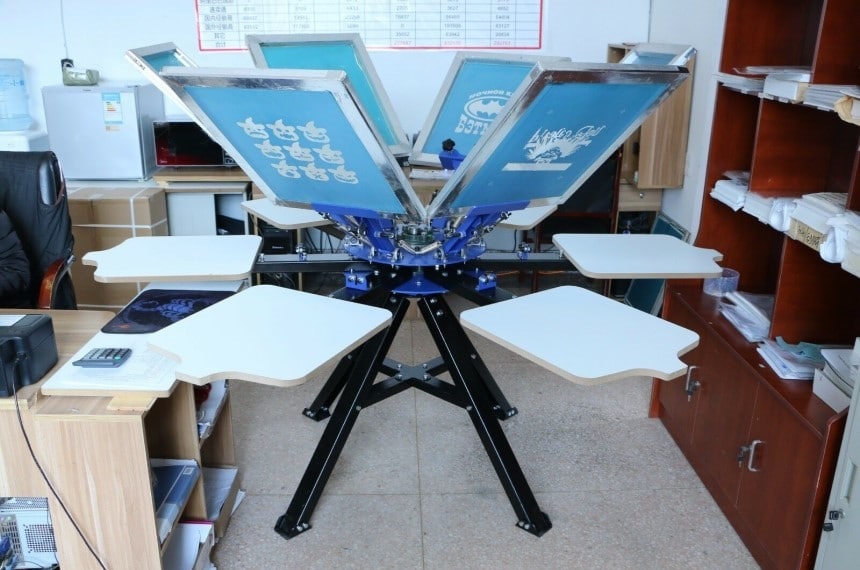
This is the first time that you’ve done screen printing, and you are satisfied with the results you are getting. You will obviously get the job done at some point and need to put your tools away. For you to do this, you need to clean your tools, more specifically, your screen and the squeegee.
This is not as troublesome as the other processes you had to deal with. You just need to purchase emulsion remover, which is widely available in many stores, including those in your locale. You apply it on both sides of the screen so that it covers all the emulsion paint. After that, you use a high-pressure hose to wash out both the emulsion and the remover.
Also, if you feel like you may need the designs that you were using at a later date, there is no need to throw them in the trash. You can keep them safe and whip them out when you need to.
If you want a custom design, it becomes a different scenario. You may need to make a design, and that requires you to have software such as Photoshop. Do not forget that you can outsource the creation of a design if you find it too challenging.
However, there is also that person who wants to print five t-shirts once a week. Considering the pricing of the automatic press, it would be more cost-effective to have a manual option. Also, a lot of the automatic press functionalities would be wasted in the home setting. As such, how you plan to use the machine will determine which purchase is better for you.
Our top picks would be quite beneficial, especially for people trying to make money out of screen printing. They are the EEZGLOBAL 006431 Screen Printing Machine, TECHTONGDA 6 Color 6 Station Screen Printing Machine, and TECHTONGDA Cylinder Screen Printing Machine.
Anybody serving lots of clients will go for the TECHTONGDA 6 Color 6 Station Screen Printing Machine. It is quite expensive and takes up a lot of space. Nonetheless, it is capable of handling six t-shirts at the same time. You will be able to deliver on time no matter the size of the order. You might, however, need to match labor to the number of stations.
TECHTONGDA Cylinder Screen Printing Machine is a cylinder screen printing machine featuring one color and one station. It offers 11.8″ x 9.4″ max. frame size, 1.2” max. frame thickness, and two locking rings.
Lastly, the EEZGLOBAL 006431 Screen Printing Machine is an excellent transition tool. You’ve been doing prints for your friends and family and now want to make a business out of it. This is one of the tools you should consider. It helps you work out the kinks of a multi-station tool as well as allows you to take on more work. It is also not as expensive as these two mentioned here.
With these three options, you can likely take on most flat substrate jobs. Also, we have already established that your needs differ from ours and those of your neighbor. For this reason, don’t pick these three devices if they don’t fit your use scenario. With the information given above, you can make a selection that works the best for you.
